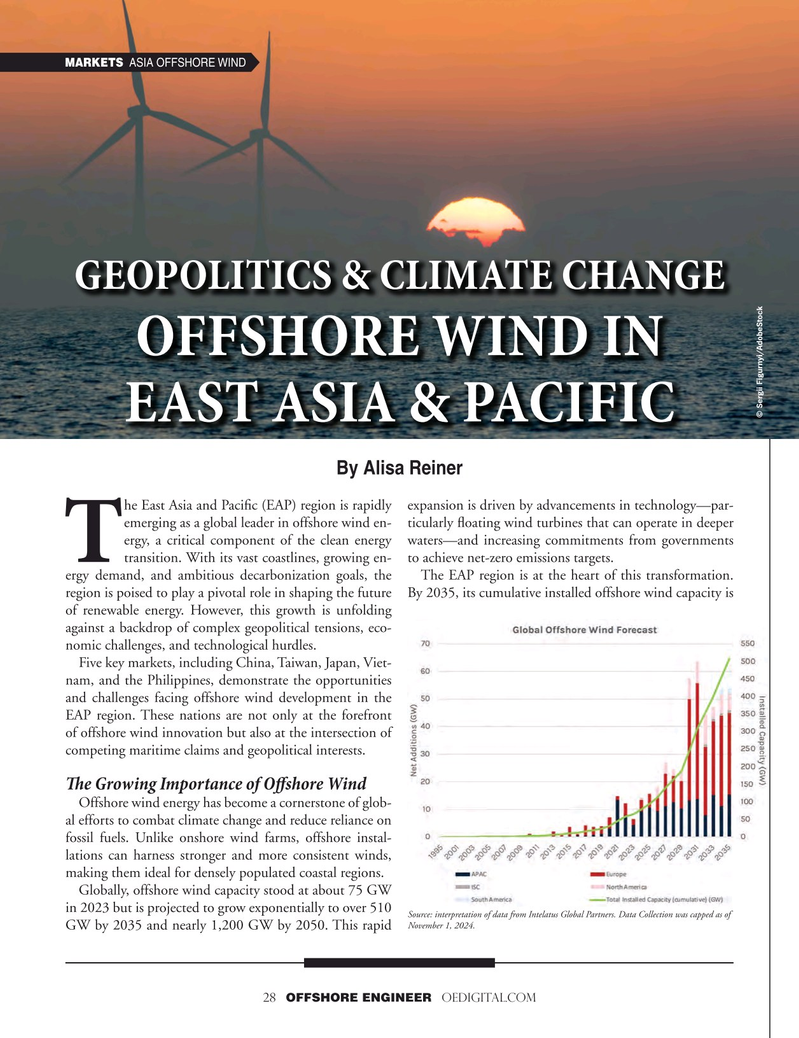
Page 28: of Offshore Engineer Magazine (Mar/Apr 2025)
Read this page in Pdf, Flash or Html5 edition of Mar/Apr 2025 Offshore Engineer Magazine
MARKETS ASIA OFFSHORE WIND
GEOPOLITICS & CLIMATE CHANGE
OFFSHORE WIND IN © Sergii Figurnyi/AdobeStock
EAST ASIA & PACIFIC
By Alisa Reiner he East Asia and Pacifc (EAP) region is rapidly expansion is driven by advancements in technology—par- emerging as a global leader in offshore wind en- ticularly foating wind turbines that can operate in deeper ergy, a critical component of the clean energy waters—and increasing commitments from governments transition. With its vast coastlines, growing en- to achieve net-zero emissions targets.
T ergy demand, and ambitious decarbonization goals, the The EAP region is at the heart of this transformation. region is poised to play a pivotal role in shaping the future By 2035, its cumulative installed offshore wind capacity is of renewable energy. However, this growth is unfolding against a backdrop of complex geopolitical tensions, eco- nomic challenges, and technological hurdles.
Five key markets, including China, Taiwan, Japan, Viet- nam, and the Philippines, demonstrate the opportunities and challenges facing offshore wind development in the
EAP region. These nations are not only at the forefront of offshore wind innovation but also at the intersection of competing maritime claims and geopolitical interests.
Te Growing Importance of Ofshore Wind
Offshore wind energy has become a cornerstone of glob- al efforts to combat climate change and reduce reliance on fossil fuels. Unlike onshore wind farms, offshore instal- lations can harness stronger and more consistent winds, making them ideal for densely populated coastal regions.
Globally, offshore wind capacity stood at about 75 GW in 2023 but is projected to grow exponentially to over 510
Source: interpretation of data from Intelatus Global Partners. Data Collection was capped as of
November 1, 2024.
GW by 2035 and nearly 1,200 GW by 2050. This rapid 28 OFFSHORE ENGINEER OEDIGITAL.COM

 27
27

 29
29